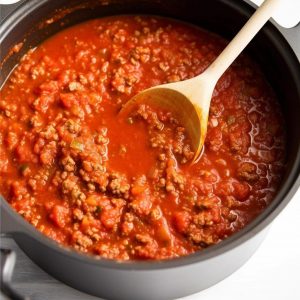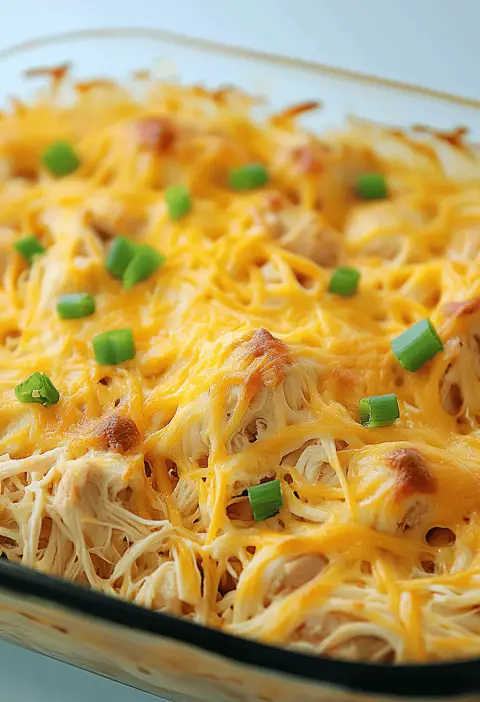There’s something magical about stirring a pot of tomato sauce on a quiet evening. The gentle bubbles, the scent of garlic mingling with sweet tomatoes—it feels like a warm hug from the inside out. You might be squeezing this in between errands, or carving out a little ‘me time’ at the end of a long day. Either way, it’s pure comfort.
You know what? Homemade sauce isn’t as daunting as it sounds. With just a handful of pantry staples, one trusty saucepan, and some patience, you’ll end up with something far richer than any jar you buy. And let’s be honest: there’s something deeply satisfying about knowing you made it from scratch.
Why You’ll Love It
Think of this recipe as your blank canvas. You control every note—how sweet, how herby, even how spicy it gets. Craving a hint of creaminess? A splash of half-and-half at the end turns it into a velvety pink sauce. Need more veggies? Toss in mushrooms or bell peppers when you sauté the onions. And let’s not overlook the pride factor: friends and family will rave when they find out it’s “just some tomatoes and garlic,” because the flavor is that rich. Plus, this sauce freezes beautifully—hello, future weeknight dinners saved.
Timing and Servings
- Prep time: 10 minutes
- Cook time: 30 minutes
- Total time: about 40 minutes
- Yields: enough sauce for 4–6 servings of pasta
Ingredients
- 2 tablespoons extra-virgin olive oil
- 1 medium onion, finely chopped
- 3 cloves garlic, minced
- 1 (28-ounce) can crushed tomatoes
- 1 (14-ounce) can diced tomatoes
- 2 teaspoons sugar (adjust if tomatoes are very tart)
- 1 teaspoon dried basil
- 1 teaspoon dried oregano
- ½ teaspoon salt, plus more to taste
- ¼ teaspoon black pepper
- Pinch of red pepper flakes (optional, for a little kick)
Directions
- Heat the olive oil in a heavy-bottomed pot over medium heat. Add the chopped onion and sauté for about 5 minutes, until it turns soft and translucent.
- Add the garlic and cook for just 30 seconds—enough to release its aroma without browning it (browned garlic can taste bitter).
- Pour in both cans of tomatoes. Stir in the sugar, basil, oregano, salt, pepper, and red pepper flakes if you’re feeling adventurous. Give everything a good mix.
- Reduce heat so the sauce barely bubbles. Let it simmer, uncovered, for 20–30 minutes—stirring occasionally to keep it from sticking. You’ll notice it thickens and deepens in color.
- Give it a taste test. If it’s a bit sharp, add a pinch more sugar. If it needs more personality, sprinkle in extra herbs. Adjust salt and pepper as needed.
- When the sauce is glossy and coats the back of a spoon, remove from heat. Serve it steaming over your favorite pasta, or let it cool for storage.
Variations
Feel free to make this sauce your own:
• For a meaty twist, brown half a pound of ground beef or Italian sausage with the onions.
• Stir in chopped mushrooms or diced zucchini for an extra veggie boost.
• A swirl of heavy cream or mascarpone at the end makes the sauce luxuriously silky.
• Fresh herbs always shine: tear a handful of basil leaves or snip some oregano from your garden right before serving.
Storage & Reheating Tips
Leftover sauce? No problem.
- Refrigerator: Store in an airtight container for up to 5 days.
- Freezer: Portion into freezer-safe bags or containers and freeze for up to 3 months.
To reheat, warm gently over low heat, adding a splash of water or broth if it’s too thick. Microwaving individual portions works too—heat for about a minute, stirring halfway through.
FAQs
Can I use fresh tomatoes instead of canned?
Absolutely. When tomatoes are in season, blanch them in boiling water for 30 seconds, peel off the skins, chop roughly, and use about 2 pounds. You might need a bit more sugar if they’re extra acidic.
Why does my sauce taste bitter?
Bitter notes often mean the garlic or herbs got too dark, or the tomatoes were very acidic. Make sure the garlic just softens, stir regularly, and balance flavors with a tiny bit more sugar if needed.
What pot is best for this sauce?
A heavy-bottomed saucepan or Dutch oven (think Le Creuset, Staub, or any sturdy enamel pot) keeps the heat even and prevents scorching. But a good stainless steel pot works fine too.
Conclusion
Whipping up your own spaghetti sauce is one of those small pleasures that really sticks with you—both in the kitchen and on the palate. With minimal effort and everyday ingredients, you’ll have a sauce that’s brighter, deeper, and more versatile than anything from a jar. And if you’re anything like me, you’ll find yourself drifting into little daydreams of Italian hill towns while it simmers. So grab your apron, queue up your favorite playlist, and let this sauce become the new heart of your weeknight routine. Enjoy every spoonful!

Homemade Spaghetti Sauce
Ingredients
- 2 tbsp olive oil
- 1 onion finely chopped
- 2 cloves garlic minced
- 1 28 oz can crushed tomatoes
- 1 14 oz can diced tomatoes
- 2 tsp sugar
- 1 tsp dried basil
- 1 tsp dried oregano
- 1/2 tsp salt or to taste
- 1/4 tsp black pepper
- 1/4 tsp red pepper flakes optional
- Fresh basil leaves for garnish
- Grated Parmesan cheese for serving
Instructions
- Sauté the Aromatics: Heat olive oil in a large saucepan over medium heat. Add chopped onion and sauté until translucent, about 5 minutes. Add minced garlic and cook for an additional minute until fragrant.
- Add Tomatoes and Seasonings: Pour in the crushed and diced tomatoes. Stir in sugar, dried basil, dried oregano, salt, black pepper, and red pepper flakes (if using). Mix well.
- Simmer the Sauce: Reduce heat to low and let the sauce simmer uncovered for 20-30 minutes, stirring occasionally, until it thickens and the flavors meld together.
- Adjust Seasoning: Taste the sauce and adjust seasoning as needed. If the sauce is too acidic, add a little more sugar.
- Serve: Serve the sauce over your favorite cooked pasta. Garnish with fresh basil leaves and a sprinkle of grated Parmesan cheese.







